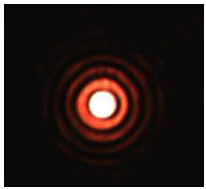
Introduction
The physical optics experiment based on the liquid crystal spatial light modulator (SLM for short) realizes the mask simulation of the basic optical element by using the amplitude imaging principle of the SLM, so as to dynamically change the optical element to complete different basic optical experiments. The optical components that can be simulated include single slit, double slit, multiple slits, small holes, various special-shaped holes, sinusoidal gratings, rectangular gratings, axicon lenses, blazed gratings, etc., and can define various mask patterns by themselves to achieve different the experimental content. After the digitally simulated optical components are loaded into the optical path, the optical phenomena produced are consistent with those produced by traditional physical optical components, which are in line with optical theory, and can perfectly verify various optical calculation theoretical formulas. Combined with computer simulation algorithms, optical theoretical knowledge and actual physical phenomena can be perfectly integrated and reproduced.
Physical optics experiments based on SLM mainly include qualitative observation and quantitative analysis. Qualitative observation mainly refers to observing the actual experimental phenomenon through CCD or white screen, and comparing it with the computer simulation results, so as to understand the optical phenomenon of the experimental principle. Quantitative analysis is to use computer image processing methods to quantitatively analyze the observed results, which can be used as the content of experimental projects or project design for the ability improvement of senior students, training students to use computer technology to solve and analyze actual optical theory and phenomenon results. ability.



